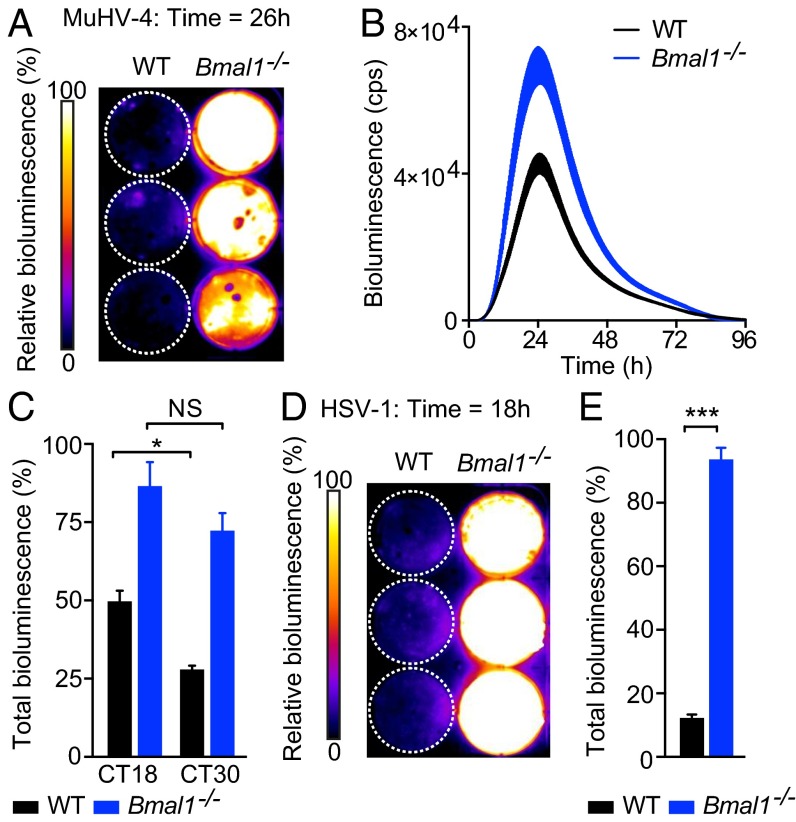Fig. 4.
Herpesvirus replication is enhanced in Bmal1−/− cells. (A) Pseudocolored bioluminescence image of WT and Bmal1−/− primary cells infected with M3:luc MuHV-4. See also Movie S2. (B) Representative bioluminescence recordings of synchronized WT and Bmal1−/− primary cells infected with M3:luc MuHV-4 (mean ± SEM; n = 3). (C) Synchronized WT and Bmal1−/− primary cells were infected with M3:luc MuHV-4 at either CT18 or CT30. MuHV-4 replication is significantly increased in Bmal1−/− cells compared with WT cells (mean ± SEM; n = 3) [total bioluminescence (AUC) normalized as for Fig. 3C; two-way ANOVA (genotype × CT of infection): genotype effect, P < 0.0001]. Time-of-day effect on viral replication is observed in WT cells, but not Bmal1−/− cells [total bioluminescence two-way ANOVA (genotype × CT of infection): post hoc multiple comparisons: NS = not significant, *P < 0.05). See Fig. S5 for circadian reporter controls and M3:luc MuHV-4 kinetic analysis. (D) Pseudocolored bioluminescence image of WT and Bmal1−/− primary cells infected with CMV:luc HSV-1. See also Movie S3. (E) CMV:luc HSV-1 replication is significantly increased in Bmal1−/− cells compared with WT cells (mean ± SEM; n = 3). Total bioluminescence (AUC) normalized as for Fig. 3C (two-tailed t test: ***P < 0.001). See Fig. S4E for correlation analysis of total bioluminescence and infectious particle production (log10 pfu).

